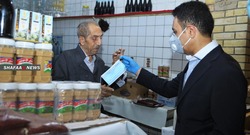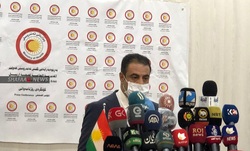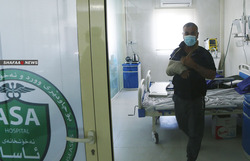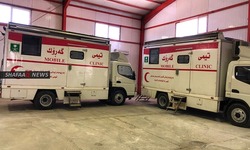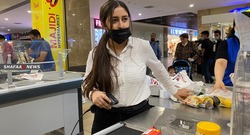Report: U.S. forces ensure their safety in Kurdistan

Shafaq news/ US-The Hill newspaper said in a report that Washington faces a crucial juncture in its role in Iraq, Troops are being reduced from 5,200 to around 3,000 and Washington will have to do more with less in the country, Calling for reliance on the idea of reinforcing the US military presence in the Kurdistan Region.
The report stated that “It is a time of transition in Iraq in several ways” since There is “a new commander for the U.S. fight against ISIS. Lt. Gen. Paul Calvert assumed command on Sept. 9, the seventh commander of the Combined Joint Task Force-Operation Inherent Resolve, the coalition that was put together in 2014 to defeat ISIS. “
It added, “The coalition has been successful; ISIS was largely defeated in 2017. By 2019 ISIS had lost all the land it held in Syria, and today the terrorist group operates from sleeper cells in rural areas of Syria and Iraq. “
“The coalition includes more than 70 countries, but only a few contributed forces on the ground. Today ground forces no longer are needed to go outside the wire and hunt down ISIS members. The Iraqis, more than 200,000 of whom were trained and mentored by the coalition, are capable. “
The report declared, “Despite the success, the challenge of confronting rocket fire by pro-Iran groups, and the threat of COVID-19, has led to rapid consolidation of forces and withdrawal.”
“The U.S. and coalition partners handed over eight bases and posts to full Iraqi control over the past seven months. This means that American troops are located at only a few places in Iraq, including in Baghdad, Al-Asad air base and facilities in the Kurdistan region.”
The report reminds what President Trump has told America’s warfighters that “it is not their duty to fight in faraway places and solve ancient conflicts,” and he has noted that the U.S. helped to defeat ISIS. Evidence points to a desire by the White House to keep the U.S. footprint in Iraq as small as possible, while also deterring Iran.
It concluded that “This leaves the Pentagon needing to do more with less in Iraq. Luckily, America has the tools and technology to do that. Using drones and intelligence, the U.S. has continued to keep the pressure on ISIS. Drones don’t win wars, but the U.S. isn’t fighting a major war in Iraq; ISIS today consists of small groups of men hiding in caves and rural areas. For example, in August the coalition said that it carried out 17 strikes against ISIS in Iraq and Syria. Eleven of these strikes were in Iraq — they hit eight caves, eight tunnels, and killed nine ISIS members.”
“Keeping ISIS defeated and Iraq stable requires continual training of Iraqi forces. That includes not only the Iraqi army but also the Kurdish Peshmerga, an independent military force of the Kurdish autonomous region. COVID-19 has made training difficult, though, and it is unclear when full training can resume.” The report stressed.
About Iran, the report stated, “Lastly, the U.S. needs to deter Iran from carrying out more attacks in Iraq. Commanders have sought to deter Iran’s proxies in Iraq through airstrikes carried out in response to any casualties among coalition members. Since March, there have been no casualties but there are weekly rocket attacks — and now attacks on trucks supplying coalition forces. The U.S. has yet to adopt a strategy to deter these attacks. The use of the C-RAM system in Baghdad on Sept. 14 to intercept two rockets fired at the Green Zone is an example of how high-tech defensive solutions can help. Closing bases and posts also means there are fewer targets for the pro-Iran militias. Placing U.S. forces in the Kurdistan region, which is more pro-American, has ensured their safety. “
It continued, “The result is a smaller footprint with just a few thousand U.S. forces. This potentially enables the U.S. to be more confident because it doesn’t have soldiers exposed to Iran’s threats but can continue to support operations against ISIS. Time will tell whether this becomes a new American way of war — no “surges” such as those in the mid-2000s, and a focus on having partner forces do field operations. As long as ISIS stays in its caves and Iran’s militias can’t strike at U.S. forces, this process of consolidation in Iraq could prove successful.”
